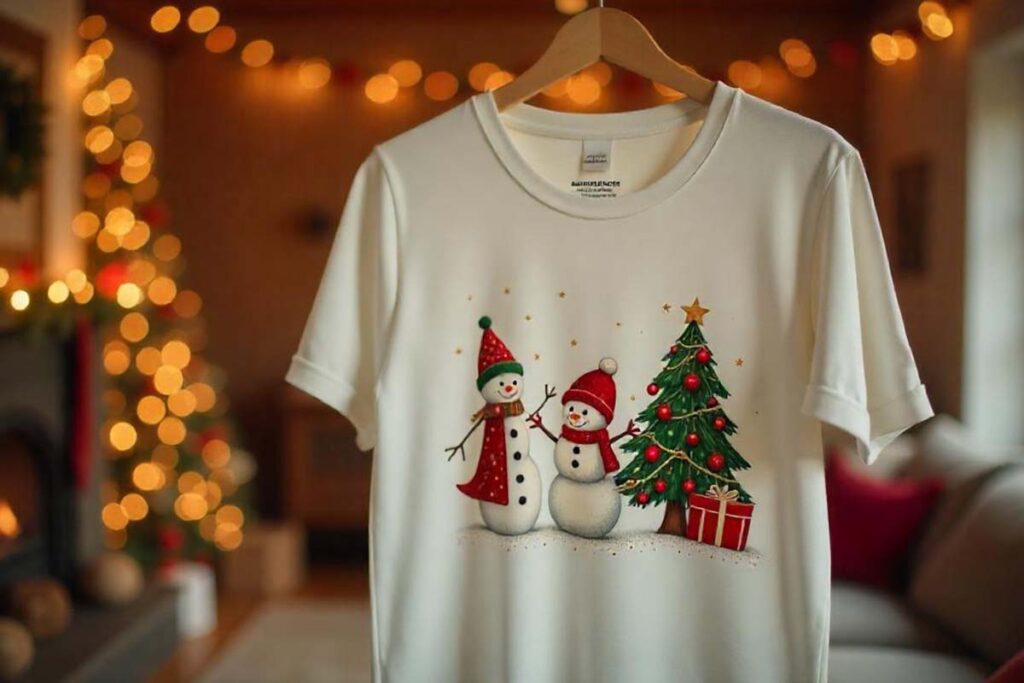DTF printing, short for Direct-to-Film printing, is revolutionizing the way custom apparel is created and personalized. This innovative method allows designers and entrepreneurs to transfer intricate and vibrant designs onto various fabric types with ease, making it a popular choice for those starting in the custom printing industry. Whether you are a small business owner or a hobbyist, understanding DTF printing can unlock numerous avenues for creativity and profit. With a straightforward DTF printing tutorial, anyone can learn the ropes of this efficient technology and explore DTF business opportunities that await in the market. As you delve into the essentials of DTF printing, you’ll discover the versatility it offers for producing eye-catching custom apparel.
Exploring alternative techniques such as film printing or heat transfer printing reveals the exciting possibilities of apparel decoration. This comprehensive guide introduces you to the world of Direct-to-Film methods, where specialized DTF printers play a crucial role in creating stunning designs. By mastering the basics of this printing methodology, you can effectively tap into a thriving niche within custom apparel production. From innovative printing solutions to lucrative business prospects, the realm of fabric decoration through film applications is ripe with potential. Dive into this fascinating journey and learn how to harness the power of film-based printing to elevate your design game.
The Basics of Direct-to-Film (DTF) Printing
Direct-to-Film (DTF) printing is an innovative and user-friendly method that transforms the way we approach custom apparel. This technique involves printing vivid, eye-catching designs on a specialized film, which can later be applied to various fabrics using a heat press. What makes DTF printing particularly appealing is its versatility, accommodating a range of garment materials, including cotton, polyester, and blends. It’s an exceptional choice for those looking to produce high-quality prints without the complexities inherent in other printing methods.
The process of DTF printing starts with creating a design, which is then printed onto a special transfer film using a DTF printer. This method stands out due to its excellent color fidelity and ability to reproduce intricate details, ensuring that every custom design translates beautifully onto fabric. As a beginner, understanding these fundamentals provides a solid foundation for exploring the many possibilities that DTF printing offers.
Essential Equipment for DTF Printing
Starting your DTF printing journey requires specific equipment to achieve optimal results. First and foremost, investing in a reliable DTF printer is crucial. Models like the Procolored Printer P13 are specifically designed for this purpose, offering user-friendly interfaces and impressive print quality that can meet the demands of any budding entrepreneur. Alongside the printer, a good heat press machine is essential, as it plays a vital role in transferring the printed designs to garments, ensuring adherence and durability.
Additionally, don’t overlook the importance of quality transfer films and DTF inks. Using the right materials not only enhances the final output but also contributes to the longevity of the prints. Moreover, having a computer equipped with design software such as Adobe Illustrator or CorelDRAW will facilitate your design creation process, helping you to produce stunning graphics that reflect your creative vision.
Step-by-Step Guide to DTF Printing
The DTF printing process can be broken down into a few essential steps, each critical to achieving a polished final product. To begin with, you need to design your graphics using dedicated software that allows for creativity and customization. Once your design is ready, the next step involves loading your DTF printer with the appropriate transfer film and settings tailored to your specific design needs.
Following this, the printed film requires a coating of adhesive powder, which is then cured with heat to solidify the print and prepare it for transfer. When you’re ready to apply the design, place the film on your garment, cover it with the heat press, and apply the necessary heat and pressure. The final step involves peeling off the film, revealing your vibrant design firmly attached to the fabric—ready to wear or sell!
Emerging Trends in DTF Printing
The DTF printing field is rapidly evolving, offering exciting advancements that make the process more efficient and user-friendly. Recent trends indicate a shift towards automated solutions and ready-to-press transfers, significantly reducing the workload for designers. Events like PacPrint 2025 highlight these innovations, showcasing new technologies and methods that are shaping the future of custom apparel printing.
Moreover, as consumer preferences shift toward personalized apparel, DTF printing positions itself as a preferred choice for both businesses and consumers. The increase in demand for custom garments suggests that those who harness the latest trends will likely see greater opportunities for growth and profitability in the DTF printing market.
Business Opportunities with DTF Printing
Starting a DTF printing venture opens up a world of business opportunities, particularly for those interested in custom apparel. Whether you’re looking to create your own designs or offer contract printing services for other businesses, the low initial investment and flexibility of DTF printing make it an attractive option. Entrepreneurs can easily cater to diverse markets, from local sports teams to personalized gifts for special occasions.
As the popularity of DTF printing continues to rise, so does the potential for substantial profit. By establishing a niche—like eco-friendly fabrics or trendy graphic tees—you can differentiate your business in the competitive market of custom apparel printing. Keeping an eye on evolving consumer trends and staying adaptable are key strategies for making the most of your DTF printing business.
The Future of DTF Printing
Looking ahead, the DTF printing industry is poised for significant growth, with projections suggesting a robust expansion by 2030. Factors contributing to this promising future include technological advancements, improved printing materials, and a growing consumer base eager for customizable options. Understanding these trends is essential for anyone looking to establish themselves in this thriving market.
Furthermore, the increasing integration of digital technologies in printing processes signals a transformative phase for DTF printing. Staying informed about new developments, such as enhanced printing techniques and consumer demands, will allow entrepreneurs to strategically position their products, ensuring relevance in an ever-evolving marketplace.
Frequently Asked Questions
What is DTF printing and how does it work?
DTF printing, or Direct-to-Film printing, is a method that prints designs onto a special film, which is then transferred onto fabric using heat and pressure. It’s known for producing vibrant colors and intricate designs on various fabric types, making it versatile for custom apparel printing.
What equipment do I need to start DTF printing?
To begin your DTF printing journey, you’ll need a DTF printer, a heat press machine, DTF transfer film, DTF inks, and a computer equipped with design software. This setup is essential for creating high-quality custom apparel.
Can I use DTF printing for dark garments?
Yes, one of the advantages of DTF printing is its ability to print on dark fabrics. The process allows for exceptional color vibrancy even on darker materials, making it a preferred choice for custom apparel printing.
What are the steps involved in the DTF printing process?
The DTF printing process includes designing your artwork, printing on transfer film, sprinkling adhesive powder, curing the design with heat, and finally transferring it onto fabric with a heat press. Each step is crucial for achieving quality results.
What are some business opportunities with DTF printing?
DTF printing presents several business opportunities, such as starting your own custom apparel line, offering contract DTF printing services to other businesses, or creating ready-to-press transfers for resale, allowing for a low-cost entry into the market.
How does DTF printing compare to other printing methods?
DTF printing offers advantages over other methods like screen printing or direct-to-garment (DTG) due to its versatility with dark fabrics, fine detail reproduction, and often lower startup costs. It’s especially appealing for small businesses and those looking to offer custom apparel quickly.
| Aspect | Details |
|---|---|
| Understanding DTF Printing | DTF printing transfers designs from a special film to fabric using heat and pressure. It offers vibrant colors, works on dark garments, and is suitable for various fabric types. |
| Equipment Needed | 1. DTF Printer: e.g., Procolored Printer P13 2. Heat Press Machine 3. Transfer Film and DTF Inks 4. Computer with Design Software (e.g., Adobe Illustrator, CorelDRAW) |
| The DTF Printing Process | 1. Design Creation 2. Printing on Film 3. Powder Coating 4. Heat Transfer 5. Peel and Enjoy |
| Market Innovations | The DTF printing market is innovating, with events like PacPrint showcasing new technologies and ready-to-press transfers simplifying the process. |
| Business Opportunities | DTF printing allows for starting a small business with low investment and collaboration with other businesses needing custom solutions. |
| Future of DTF Printing | Predictions show continued growth in DTF printing by 2030, with a focus on industry trends and emerging technologies. |
Summary
DTF printing is a revolutionary technique that offers incredible opportunities for those interested in custom apparel. As a beginner or small business owner, understanding the essential aspects of DTF printing—including the equipment needed, the printing process, and current market trends—can set you up for success. This method’s versatility and capability to yield vibrant designs on various fabrics makes it an attractive option in the ever-evolving world of textile printing. Exploring innovations and potential business avenues within DTF printing can not only elevate your craft but also tap into a growing consumer base looking for unique, personalized apparel.




